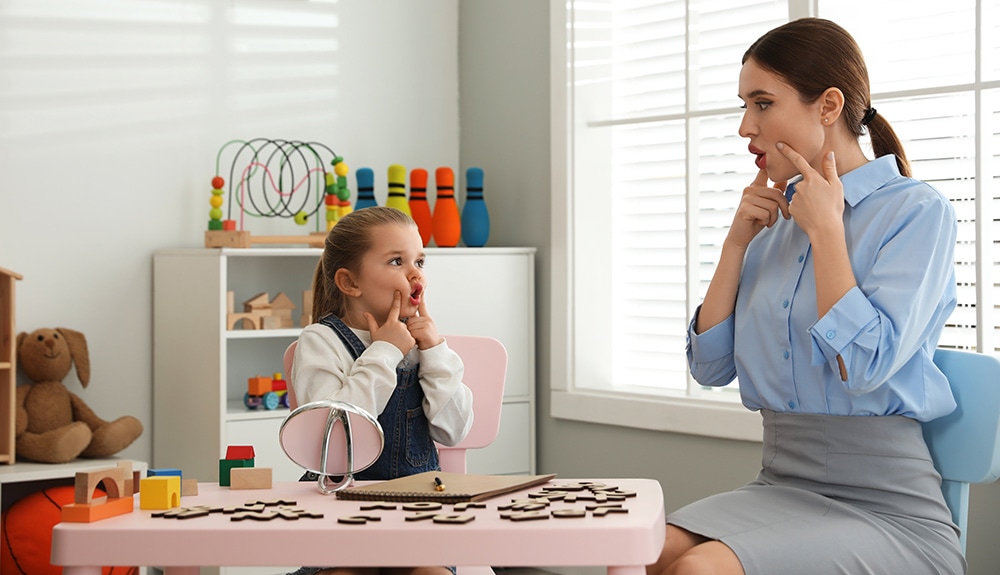
Articulation Errors in Kids and How to Fix Them
Clear speech is a fundamental part of effective communication for children. However, many kids go through stages where they struggle with certain sounds or produce them incorrectly. These are called articulation errors, and while common, they can impact how well your child is understood by others.
At Al Najma Center, we specialize in identifying and addressing these common speech sound errors through customized therapy and home strategies. This blog explains the top 10 articulation errors that children make and some practical ways to help fix them.
What Are Articulation Errors?
Articulation errors refers to difficulties in producing speech sounds correctly. It can be due to structural and functional problems. These errors can involve substitutions, omissions, distortions, or additions of sounds.
Top 10 Articulation Errors in Kids
1. Substitution
This occurs when one sound is replaced by another.
Example: Saying “wabbit” instead of “rabbit.”
How to fix it:
- Model the correct sound slowly and clearly.
- Use games and repetition to encourage the child to produce the correct sound.
- Practice words beginning with the target sound.
2. Omission
The child leaves out a sound, often at the end of words.
Example: Saying “ca” for “cat.”
How to fix it:
- Emphasize the missing sound when speaking.
- Use visual cues like pointing to the mouth.
- Practice stretching the last sound.
3. Distortion
The sound is produced incorrectly but close to the correct sound.
Example: Lisping the “s” sound.
How to fix it:
- Provide visual feedback using mirrors.
- Use tactile cues (touching the tongue or lips) to show correct placement.
4. Addition
Extra sounds are inserted into words.
Example: Saying “buhlack” instead of “black.”
How to fix it:
- Practice breaking down words into separate sounds.
- Model the correct pronunciation clearly and slowly.
5. Stopping
Replacing sounds made with continuous airflow (like “s” or “f”) with a stop sound (like “t” or “p”).
Example: Saying “tun” instead of “sun.”
How to fix it:
- Help the child feel the continuous airflow by placing a finger near their mouth.
- Use minimal pairs (words that differ by one sound) to practice.
6. Fronting
Replacing sounds made at the back of the mouth with sounds made at the front.
Example: Saying “tat” instead of “cat.”
How to fix it:
- Practice sounds like “k” and “g” with visual and tactile cues.
- Encourage awareness of tongue placement at the back of the mouth.
7. Gliding
Replacing “r” or “l” sounds with “w” or “y.”
Example: Saying “wabbit” for “rabbit.”
How to fix it:
- Use tactile feedback and tongue placement exercises.
- Practice “r” and “l” sounds in isolation, then in words.
8. Vowel Errors
Pronouncing vowels incorrectly, affecting clarity.
How to fix it:
- Practice vowel sounds repeatedly in isolation and words.
- Use visual aids to show mouth shape differences.
9. Cluster Reduction
Leaving out one sound in a consonant cluster.
Example: Saying “poon” for “spoon.”
How to fix it:
- Break the word into parts and practice blending slowly.
- Use visual cues to help with the missing sound.
10. Deaffrication
Replacing affricate sounds like “ch” or “j” with fricative sounds like “sh” or “zh.”
Example: Saying “shair” instead of “chair.”
How to fix it:
- Use modeling and auditory discrimination exercises.
- Focus on mouth shape and airflow during practice.
How Parents Can Help at Home
- Keep practice sessions short and fun: 5-10 minutes daily is better than long, tiring sessions.
- Use play-based learning: Incorporate toys, books, and games to encourage speech practice.
- Model correct sounds: Speak slowly and clearly, exaggerating target sounds gently.
- Praise effort and progress: Build confidence with positive reinforcement.
- Practice words in different contexts: Start with sounds in isolation, then simple words, and finally sentences.
When to Seek Professional Help
If your child consistently struggles with speech sounds after age 4 or their speech is difficult to understand, consulting a speech-language pathologist at Alnajma Rehabilitation Center is highly recommended. Early intervention leads to better communication outcomes.
How Alnajma Rehabilitation Center Can Help
At Al Najma Rehabilitation Center, our speech therapists specialize in diagnosing and treating articulation disorders using evidence-based techniques personalized for each child. We work closely with families to create practical therapy plans, including home practice support, so children make steady progress.
Ready to Help Your Child Speak Clearly?
Contact Alnajma Rehabilitation Center today for a comprehensive speech evaluation and expert therapy designed to address your child’s articulation challenges.
Back to Blogs